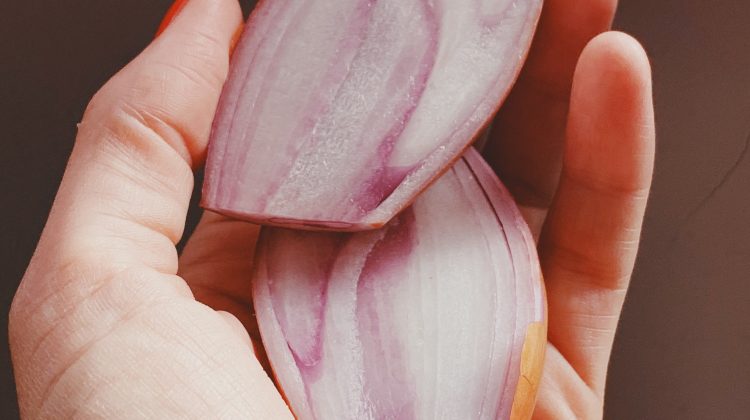
When it comes to onion varieties, shallots and green onions are two very different types of onions. Shallots are a type of onion that is typically smaller in size than green onions.
In this article, we will explore the differences between these two in terms of taste, physical traits, nutritional value and cooking techniques.
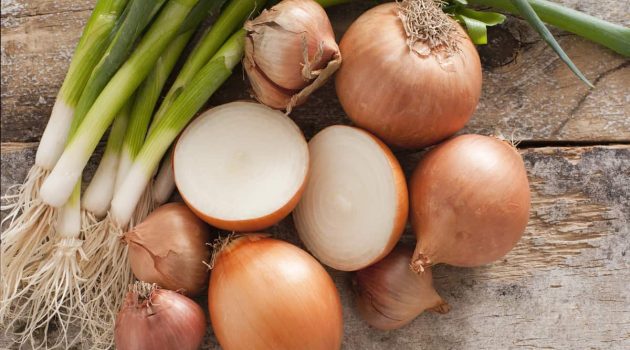
How do they differ in taste?
Shallots tend to be sharper in flavor, whereas green onions are milder tasting and have a slightly sweeter flavor. Green onions are a type of onion. Shallots are a type of onion that is usually eaten raw. They are used more in French cooking.
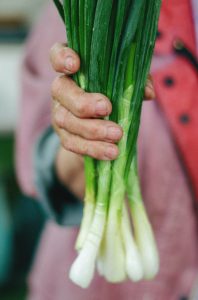
Green onions are also used in French cooking, but are more commonly found in American cuisine. Shallots are also longer and thinner than green onions, making them a more versatile choice for many dishes.
Physical difference between shallots and green onions
The physical difference between shallots and green onions is quite obvious. Shallots are the onion variety that are typically white and very small, while green onions are the onion variety that are typically green and larger. Shallots can be quite tough, so it is important to cook them slowly so they don’t become too soft.

Nutritional difference between shallots and green onions
When it comes to preparing a meal, most people would say that there is no comparison between shallots and green onions. Shallots are thought of as a more luxurious ingredient, while green onions are typically used in lower-priced dishes. However, there is a nutritional difference between the two vegetables.
Shallots contain more sulfur and vitamin C than green onions. Additionally, shallots are also higher in protein than green onions.Shallots may be small, but they pack a nutritional punch. In a study published in Nutrition Journal, researchers compared the caloric and nutrient content of shallots and green onions.
They found that shallots have more than twice the calorie and carbohydrate content of green onions. In addition, shallots are a good source of vitamin C, potassium, vitamin B6, and dietary fiber.

Harvest and cultivation difference between shallots and green onions.
Shallots and green onions are two different types of onions that are grown for different purposes. One major difference between the two types of onions is that shallots require a longer growing season than green onions. Shallots need at least six months to grow before they can be harvested, while green onions can be harvested after just three months.
Furthermore, shallots have a thin skin that must be peeled off before they can be cooked, while green onion skins can generally be left on.Also, shallots are typically harvested in early spring while green onions are typically harvested in late summer or early fall.
How to cut shallots
Shallots are a type of onion, and like all onions, they should be cut in half before being cooked. After being cut in half, the root end should be discarded and the two halves should be peeled. To chop shallots, first place them flat on your cutting board and make 1/4-inch cuts with a sharp knife.
Then turn the shallot so that it can stand on an end that has been cut before chopping the other side of the shallot. Finally, chop off any browned edges.

How to cut onions:
Start by cutting off the root end and any green leaves from the onion. Slice the onion in half from top to bottom, then slice each half into thin strips. Make lengthwise cuts down the center of each strip, removing any brown layers until you reach the white center.
Finally, make crosswise cuts into the center of each strip to create chiffonade-like pieces.
Ways To Prevent Your Eyes From Being Irritated While Cutting Shallots
There are a few ways to prevent your eyes from being irritated while cutting shallots. First, make sure you keep your hands clean and dry; excess moisture can cause irritation. Finally, cut the shallots slowly and evenly to avoid creating any sharp edges. Use a sharp knife. Dull knives can easily cause damage to your fingers and eyes.
A good rule of thumb is to use a knife that is at least half an inch thick. Avoid touching your eyes after cutting the vegetables. If you do get vegetable juice on your hands, immediately wash them with soap and water before handling food again. Keep a clean work surface clean and free of any debris that could irritate your eyes while working with food.
Ways To Prevent Your Eyes From Being Irritated While Cutting onions
Keep your eyes safe while cooking or cutting onions by wearing proper safety goggles. Cut the onions in a downward motion to avoid irritation. Use a sharp knife or vegetable slicer to make sure the onion is cut evenly.
Avoid breathing in the fumes from the onion while cooking, as this can irritate your respiratory system. Finally, make sure to clean any tools used for cooking or cutting onions immediately after use to prevent further irritation.
How to choose the right type of shallots for cooking
There are a few things to consider when choosing the right type of shallot for cooking. First, the shape and size of the shallot is important. For best results, choose shallots that are either round or elongated. Second, the color of the shallot is also important.
Choose shallots that have a yellow or orange hue so they will cook evenly and retain their flavor.
Lastly, be sure to choose shallots that are fresh. Over-cooked or old shallots will not impart their flavors into your dish and can even become inedible.
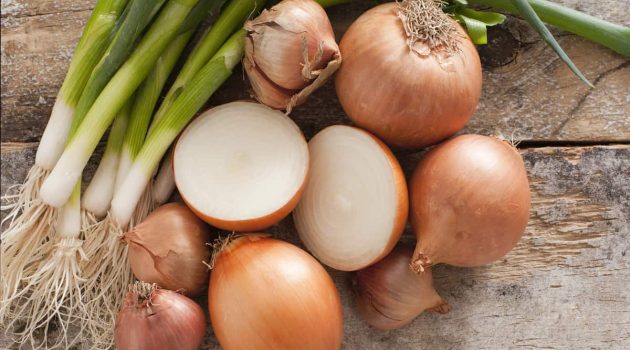
How to choose the right type of onions for cooking
Choosing the right type of onion for cooking can make a huge difference in the finished product. There are several types of onions to choose from, each with its own unique qualities that make it perfect for certain recipes. Here are tips on which onions to use for different types of cooking:
For savory dishes, use yellow or red onions. These varieties have a strong flavor that is perfect for adding spice and depth to dishes like soup and chili. They also hold their shape when cooked, so they won’t become watery or mushy. For sweet dishes, use white or Vidalia onions.
These onions have a milder flavor than other varieties, making them ideal for baking applications like cake and bread dough. They also tend to be less tough, so they’ll cook more easily and will give you a softer texture in your final product.
How to store shallots
How to store shallots:When storing shallots, keep them in a cool and dark place. They will last up to three weeks when stored this way. Alternatively, you can freeze them for up to six months. When freezing shallots, make sure they are wrapped tightly in plastic wrap so they do not become crushed.
How to store green onions:Wrap the green onion in a paper towel and place it in a plastic bag. Freeze green onions for up to 3 months.Store fresh green onions in a container of water. Change the water every day if needed.Keep fresh green onions away from direct sunlight.
What are the different types of shallots?
Shallots come in two main varieties: the white and black shallot. The white shallot is a bulb-shaped variety with a thin outer skin, while the black shallot is a small, elongated onion with a thick outer skin. Both types of shallots are used for cooking, but their flavors and textures vary significantly.
The white shallot is most commonly used for French cuisine, where its delicate flavor and slightly sweet taste is prized. It can be cooked mild or hot, and is often blended into sauces or Used as an ingredient in its own right.
The black shallot is more versatile; it can be cooked similarly to the white shallot but also has a stronger flavor that can stand on its own. Asides from the black and white shallots, there are other types of shallots such as the red, yellow and brown. All types can be used interchangeably in most recipes.
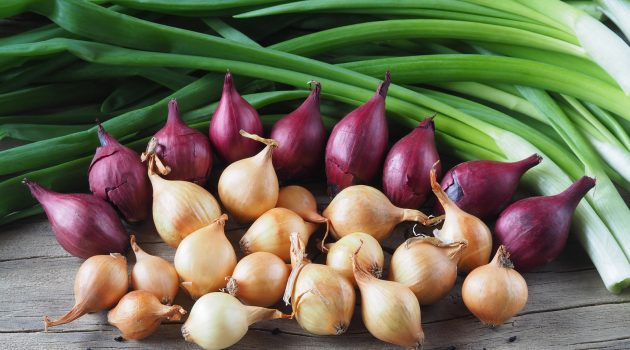
What are the different types of green onions?
There are many types of green onions, all with their own unique flavor and appearance. Here are the different types: Ascot or Walla Walla onion – These onions have a long, slender shape and a thin skin. The inside is white and mild, making it a good choice for salads.
Crescent or sweet onion – This type of onion has a bulb that is divided into two segments, one larger than the other. It has a slightly sweet flavor and an intriguing crinkled skin that gives it its name. Japanese or Chinese onion – Originating in Asia, these onions have a flat shape with thin skin that can be orange, yellow, or green. They have a strong flavor and can be used in many dishes, including sushi rolls and stir-fries.
Which has the best taste?
So, after reviewing all this information, which one can we say has the best taste? Shallots or green onions? Honestly, there’s no definitive answer, as people have different preferences. However, many people believe that shallots have a better flavor than green onions.
Some may find that the onion’s pungent aroma clashes with the delicate flavor of shallots, while others may prefer the strong taste of green onions. Ultimately, it comes down to personal preference.
Yes, green onions can be substituted for shallots in most recipes. They have a similar flavor and are easy to find.
No. They are two different types of onions
Onions are a great choice for many recipes, but chefs often use shallots because they have a milder flavor and are more versatile. Shallots can be used in many different dishes, whereas onions can be overpowering.
A green onion is about 1/3 the size of a shallot.
A white onion is most like a shallot. They are both small, have a mild flavor, and are mostly used in cooking.
Read More
McDonald’s Announces New Cardi B & Offset Meal: A Flamin’ Collaboration
McGriddles vs. McDonald’s: The Protein Showdown
8 Healthy dessert To pick On The Grocery Shelves
6 Major Differences Between Costco and Sam’s Club Right Now
Where is costco opening new stores in 2023
7 Fast-Food Restaurants That Serve the Best Patty Melts
Best 31 Healthy Restaurants in America | Locations
101 Best Restaurants Downtown Dallas That Locals Eat 2022
39 foods that lower blood sugar immediately
30 Best healthy lunch ideas for weight loss
Unveiling the Nutritional Marvels: Exploring the Remarkable Health Benefits of Cashews
Best 31 Healthy Restaurants in America | Locations
20 healthiest butter substitutes
The top 33 foods for keeping your kidney healthy
20 Healthy Chips You Can Eat When You’re Trying To Lose Weight
Unveiling the Magical Collaboration: McDonald’s New Happy Meal Toys that Delight Disney Fans
Conclusion
In conclusion, shallots and green onions are two different onions that have different flavors and uses. Shallots are more common in Europe, while green onions are more common in the United States. If you’re looking for a milder onion, try shallots; if you want a stronger onion flavor, go for green onions. Either way, these vegetables make delicious additions to your cooking repertoire!

Leave a Reply
You must be logged in to post a comment.